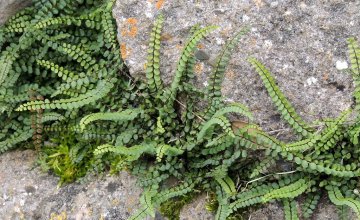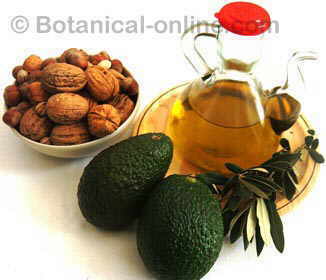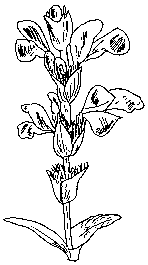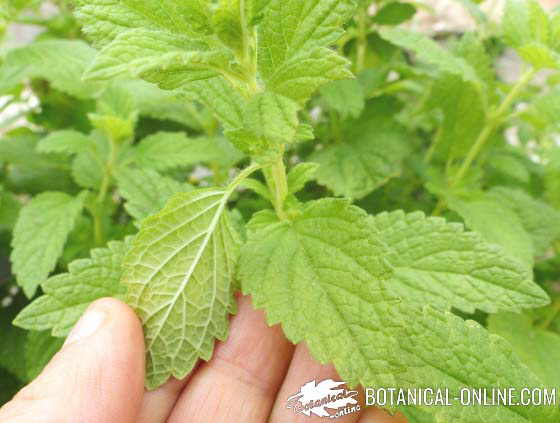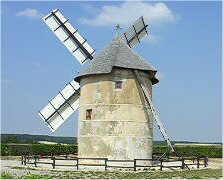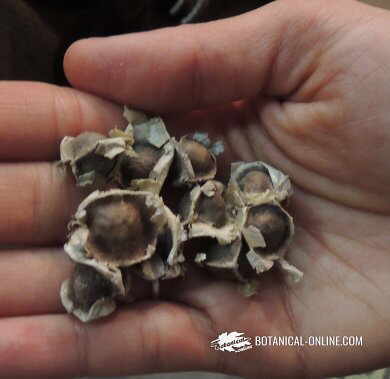Contents
- 1 How to grow heathers or heaths
- 1.1 HOW TO CULTIVATE HEATHER
- 1.2 Heather classes
- 1.3 Characteristics of common heath
- 1.4 HEATHER AND HEATH CULTIVATION
- 1.5 Heather cultivation conditions: Climate
- 1.6 Suitable soil and fertilizer for heather
- 1.7 Proper irrigation for heather
- 1.8 HEATHER PROPAGATION
- 1.9 Sexual reproduction by seeds
- 1.10 Asexual reproduction by layering
- 1.11 Asexual reproduction through cutting
- 1.12 Heather pruning
- 1.13 Heather bloom
- 1.14 Heather pests and diseases
How to grow heathers or heaths
HOW TO CULTIVATE HEATHER
Common heather is a plant very cultivated in gardens of fresh or cold climates. There are hundreds of cultivars developed to produce plants of compact character very suitable for borders, massifs, rocks or simply as protective covers of the soil. In England alone it is estimated that there are more than 400 different common heather cultivars.
Other varieties are planted with the color of leaves or flowers in mind. The wild species have pale purple or pale pink flowers. Sometimes, but more rarely, white. Cultivated varieties offer a wider range of colors: purple, purplish-crimson, pink-silver, golden-pale, mauve, white, etc.
The varieties of colored foliage are very suitable for decorating the gardens in winter.
Heathers are also used to create hedges.
In addition to the common heather we have other heather species whose cultivation is practically identical to the common heather
Heather classes
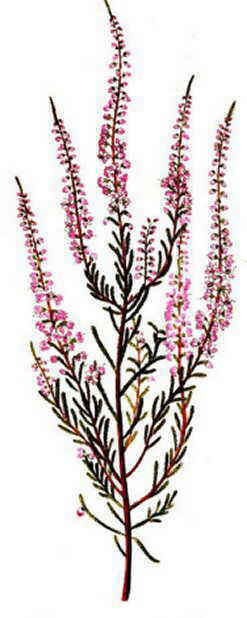
Illustration of common heather ( Calluna vulgaris )
From a gardening point of view, when we speak of heather, we refer to both the genus Calluna to which common heath (Calluna vulgaris) belongs and to other heath species belonging to the genus Erica. Although botanically they are different plants, they are all grouped within the same crop group because, in addition to being similar in shape, they share similar growing conditions except for their resistance to cold.
Naturally common heather (Calluna vulgaris) can withstand different temperature conditions than other types of heather. This plant, which, in the wild, lives in cold moorlands of the north or in very high places of Europe, America and Africa, can withstand temperatures of up to -25 or -30 ºC.
Many heather species live in warmer or even warmer areas, such as angled heath (Erica quadrangularis), native to the Cape region of South Africa, which usually can not stand more than -1 ° C
However, leaving aside this consideration, the conditions of cultivation of all heathers, in terms of their water needs, light requirements, soil types, leaf permanence, resistance and ease of cultivation, etc. are practically the same . (See species of heather)
 Characteristics of common heath
Characteristics of common heath
– Shrub of the Ericaceae family between 50 and 60 cm of height, more rarely about 1 m
– Stems abundant and branched, generally twisted and very rigid, hairy or glabrous.
– Very small triangular leaves , 1 to 2 mm, sessile, imbricated, arranged in four vertical rows. When autumn arrives, they become brown or pale purple.
– Bell-shaped flowers, gathered in compact inflorescences; Pale purple, or pale pink (more rarely, white) very small, with the calyx tetralobulate, the same color as the corolla and longer than this (4 mm). False calyx formed by 4 green bracts
– Fruits in capsule , 2 to 2, 5 mm, with four lobes. Inside each one of them appears a seed. Fruits ripen in October or November
HEATHER AND HEATH CULTIVATION
 Heather cultivation conditions: Climate
Heather cultivation conditions: Climate
– Common heather is a plant extremely resistant to cold and wind. It can withstand extreme temperatures so it is recommended for alpine gardens.
– There are also European species that live very well in cold climates and South African species that are less resistant (See heather types)
– Sunny exposure if we want it to produce many flowers or that the cultivars planted by the foliage look better. It can also live in semi-shade, although many hours of shade give it a lanky appearance and little luster to the leaves, especially in those cases when specimens with colored leaves are grown . It is considered that this plant needs at least 6 hours of sun daily.
– Most heathers are very resistant to snow. A winter snow cover protects them especially from the wind. The wind dries the ground and can cause them water stress, so it is not advisable to plant them in a windy exposure or, in any case, provide them with a protective padding in winter.
– It can grow to heights of 0 – 2.800m.
– Rusticity zone: common heath is included in zone 4 (can withstand even minimum temperatures of -25 or -30 ºC). Heathers of South African origin can be included within zones 8 (-12 ° C) -10 (-1.1 ° C) and European heaths, such as red heath (Erica cinerea), which presents a rusticity zone between 5 -28 ° C) and 9 (-5 ° C)
 Suitable soil and fertilizer for heather
Suitable soil and fertilizer for heather
– Calcareous soils are not good for heather
– Type of soil: Acid or siliceous, turbid, moist soils. Light and sandy soils. Marly medium soils. It does not support clay soils because they have poor drainage. The clay soil can be improved by adding a layer of sand and peat moss.
– Soil pH: below 6.5, with a pH of between 4,5 and 5,5.
– It withstands poor or impoverished soils, so it prefers a soil that tends to be poor than one that is too fertilized. Heather does not like manure. Add a little peat or organic matter in case of very poor soil. In normal soils, it is enough to add azalea fertilizer at the time of planting.
 Proper irrigation for heather
Proper irrigation for heather
– Heathers of more than two or three years usually do not need watering and have enough with rainwater.
– It can be watered in moderation after planting and during the first months a couple of times per week so that the soil becomes moist but not soaked.
– In case of muddy soils, plant in areas higher and inclined towards a drainage ditch. In this way, you will get a soil with the right pH but without the inconveniences of too much humidity.
 HEATHER PROPAGATION
HEATHER PROPAGATION
Sexual reproduction by seeds
– Sowing of seeds in seedbed, in February. Cover the seeds slightly and introduce them in the greenhouse to a minimum of 20 ºC.
– Germination occurs 4-8 weeks later.
– When they are large enough to handle, plant them in a pot. Protect plants from the cold the first winter in the greenhouse.
– Transplant: late spring or early summer. The transplant will be done in holes with a diameter twice the size of the roots and covered with crumbled earth.
The transplant distance should allow the plants, once grown, to have a free space to be able to have ventilation.
Asexual reproduction by layering
– Bury a branch in autumn and wait for it to produce roots, which occurs after about 12 months.
– Dig the buried area after about 12 months and separate the area with new roots from the rest of the plant.
– Plant in a pot and keep inside until well rooted.
– Transplant definitively in late spring or summer.
Asexual reproduction through cutting
– Cuttings from hard young branches on sandy peat in late summer
 Heather pruning
Heather pruning
It is important to lightly prune heathers of the Erica genus in spring before the flower buds form. For those that bloom in winter, it will be pruned after the flowers have withered.
In the case of common heath (Calluna vulgaris) the pruning will be done by cutting under the flowers.
Pruning heathers allows the plant to maintain a harmonious appearance. This gives a compact shape and shrub.
 Heather bloom
Heather bloom
Common heather blossoms from early summer to autumn. Flowers, including peduncles, are harvested for medicinal purposes. Other types of heather may bloom at different times. (See types of heather)
Heather pests and diseases
The main diseases are:
- Powdery mildew (Erysiphe polygoni)
- Root and crown rot: Caused by the fungi Phytophthora cinnamomi and Pythium sp. from infected plants. This infection is favored by high temperatures and excessive soil moisture, due to poor drainage.
Choose guaranteed copies free of fungi, control the irrigation and apply some systemic fungicide, as Mefenoxam.
- Rust (Uredo ericae)
- Verticillium wilt : Caused by the fungus Verticillium dahliae that produces yellowing, wilting and subsequent fall of the leaves. It affects mainly plants with great water stress, that is to say plants that suffer from lack of water in very warm times.
Growing heather should be avoided in places where there have been plants that are very susceptible to this disease such as tomatoes, evergreens or chrysanthemums. A mixture of methyl bromochlorine and chloropicrin will be applied to infected sites.
The main plagues of the heather are:
- Cochineals
- Mites
![]() More information on heather.
More information on heather.

